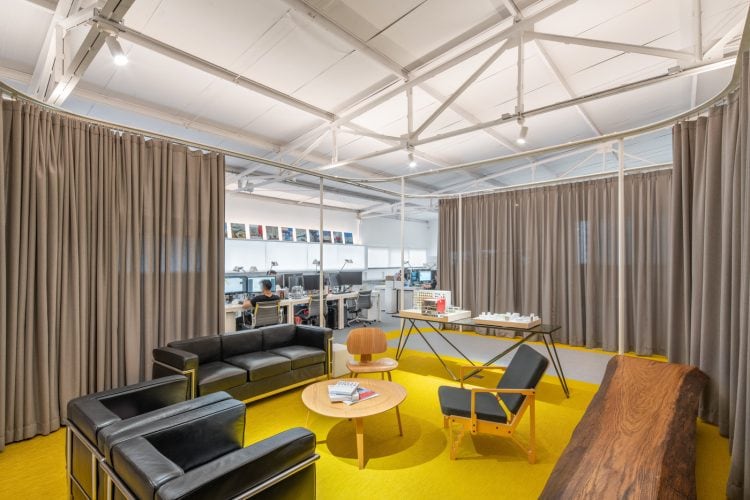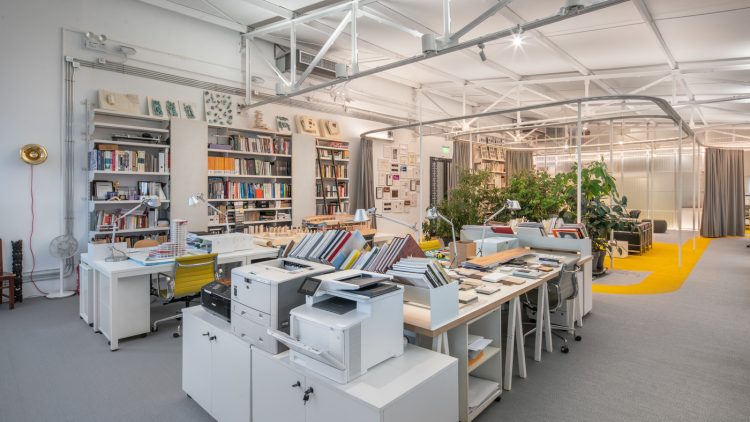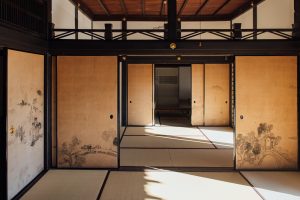Changing scenarios for an post-COVID work life
What kind of synergies can be discovered in a new ecology balancing environmental, social, and cultural dimensions? The answer should be a living environment that actively transforms the office mode. By the end of 2020, the two most significant typologies for everyday use as a society were abruptly shaken by COVID-19.
The home, as a place of life, and the office, as a place of work, were being reconsidered. Taking all of this into account, Crossboundaries began dreaming of a future typology that could fluctuate and adapt to a variety of rapidly changing scenarios. While some design factors were open for reconsideration - size, atmosphere, occupation, and communication strategies - the workspace remains intentionally unchanged in the same neighborhood as the firm’s previous office.
Located on the top floor of a five-story educational institution that had already undergone several renovations, the office was a fairly new add-on steel structure attached to the concrete skeleton of the building. This provided an almost 360-degree view and exposure to North, South, and East that assures sunlight throughout the day. Users were not the only agent to be taken into account: cycles and rhythms of the building, its urban surroundings, and even the furniture and logistics that the architectural practice needs to operate with were all factors to work with. Faced with the challenging prohibition on welding, hanging, or attaching new elements to the existing roof structure and external walls, the design becomes very effective in satisfying Crossboundaries’ company needs, while articulating the roughly 300 m2 space with very few elements, therefore committing to minimum intervention.
The main space is fluent and continuous, shaped by a lightweight curtain structure that functions as an island and connects the invariable working stations area together with a central multifunctional space. The latter is a leisure area focused on providing different scenarios beyond the regular working day: the loose furniture can be re-arranged and separated acoustically to meet the various requirements of the space over time. This multifunctional space is supported by an inherited color palette from the previous office that was already adopted as the corporate identity of Crossboundaries: a combination of grey and yellow elements and textures bring focus and stimulation to the team. A number of inner vegetation islands were not to be left behind, and now contribute to the layout with an infusion of color, while also integrating natural elements into the office.
While the pandemic has brought radical transformations to the business itself, Crossboundaries believes that the design of office spaces also has the need to undergo a forward-looking approach. This working platform has merged with a sense of domesticity, where the existing is revitalized and incorporated by reusing every piece of furniture and art that was once part of the former workplace – tables, chairs, curtains, lamps, shelves. Once socializing returns to normal, Crossboundaries will be ready to share its space and to bring people together.

A semi-transparent wall separates the pantry and staff area from the main office space
Photo credit: BAI Yu
About Crossboundaries
Crossboundaries contributes to a vital built environment through architecture, environmental design, and urban regeneration. The studio creates enduring architecture that often deals with remarkable technical processes, yet always has a pleasant material touch and human atmosphere. Organized as an international partnership, Crossboundaries' staff originates from and was trained in different parts of the world. Its first office was founded in Beijing, China in 2005 by Binke Lenhardt and DONG Hao. Later, in 2012, a partner office was established in Frankfurt, Germany by Binke Lenhardt and Antje Voigt. From urban scale architecture to graphic design, teaching, programming, and event creation, Crossboundaries practices by name, crossing boundaries into activities and dialogues in the broad field of design and architecture. Continually thinking and doing, the studio is engaging, evolving, and adapting.

 English
English 日本語
日本語







